The name of this pub recalls Sir Nathan Wright, Lord Keeper of the Great Seal (1700–1705) and later lord of the manor of Oadby. Kings and queens have used a seal to authenticate their orders for centuries. The Great Seal dates from the reign of Edward the Confessor. After the Norman Conquest, its use continued, and the custody of the seal was entrusted to the care of the chancellor of the time.
Text about the Lord Keeper of the Great Seal.
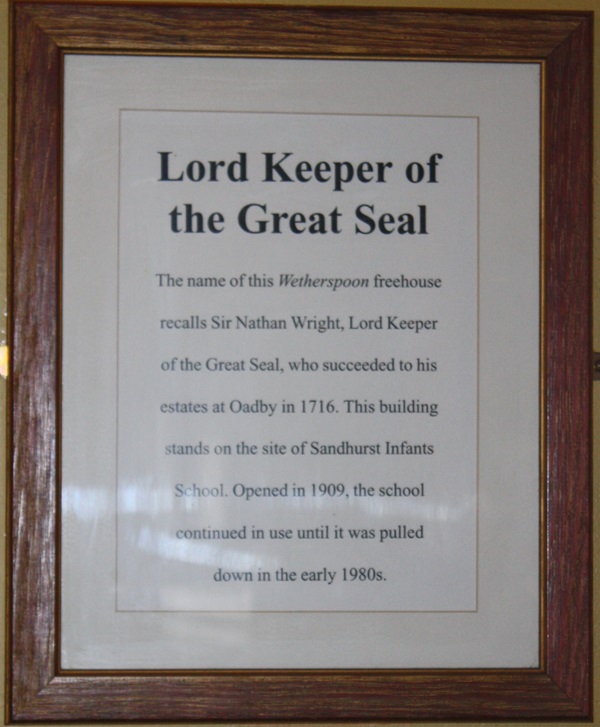
The text reads: The name of this Wetherspoon freehouse recalls Sir Nathan Wright, Lord Keeper of the Great Seal, who succeeded to his estates at Oadby in 1716. This building stands on the site of Sandhurst Infants School. Opened in 1909, the school continued in use until it was pulled down in the early 1980’s.
Illustrations and text about the knitting and spinning industry.
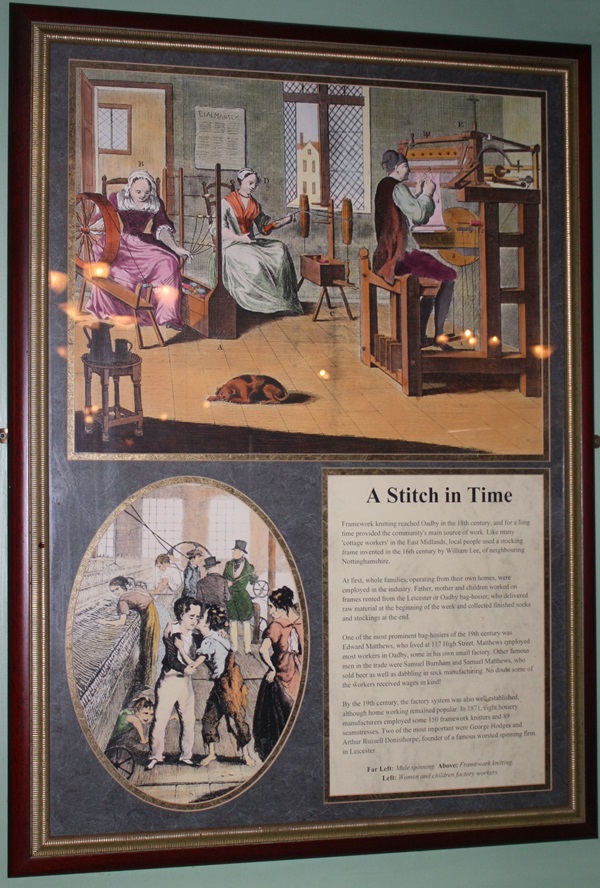
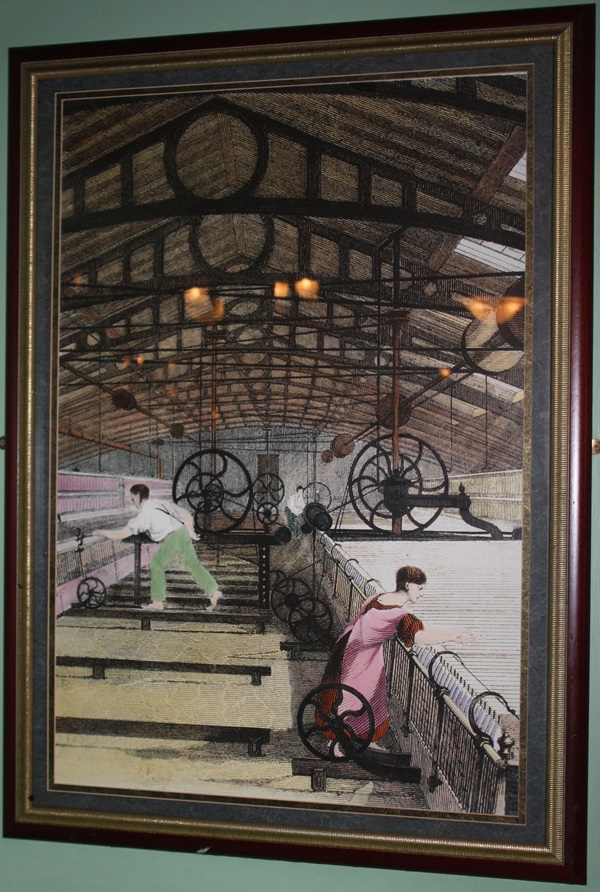
The text reads: Framework knitting reached Oadby in the 18th century, and for long time provided the community’s main source of work. Like many ‘cottage workers’ in the East Midlands, local people used a stocking frame invented in the 16th century by William Lee, of neighbouring Nottinghamshire.
At first, whole families, operating from their own homes, were employed in the industry. Father, mother and children worked on frames rented from Leicester or Oadby bag-hosier, who delivered raw material at the beginning of the week and collected finished socks and stockings at the end.
One of the most prominent bag-hosiers of the 19th century was Edwards Matthews, who lived at 117 High Street. Matthews employed most workers in Oadby, some in his own small factory. Other famous men in the trade were Samuel Burnham and Samuel Matthews, who sold beer as well as dabbling in sock manufacturing. No doubt some of the workers received wages in kind!
By the 19th century, the factory system was also well established, although home working remained popular. In 1871, eight hosiery manufacturers employed some 150 framework knitters and 89 seamstresses. Two of the most important were George Hodges and Arthur Russell Donisthorpe, founder of a famous worsted spinning firm in Leicester.
Far Left: Mule Spinning
Above: Framework knitting
Left: Women and children factory workers.
A photograph of GH Bates, greengrocers of Oadby.
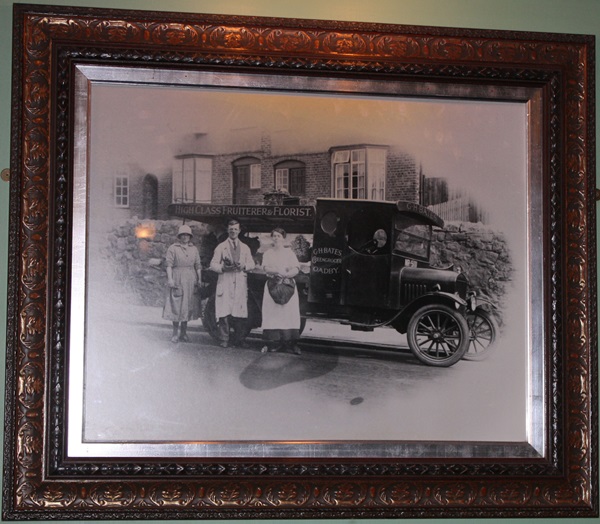
Prints and text about Sandhurst Street School.

The text reads: As you enjoy a relaxing drink and wholesome food, spare a thought for the countless children who spent some of the ‘happiest days of their life’ here. Part of this site was once home to Sandhurst Street Infants School.
Plans for a new school were first aired in 1907, by members of the newly-styled United Methodist Church of Oadby. At that time, around 200 children were being taught in the Sunday School, by twenty or more teachers in crowded and unhygienic conditions.
Members agreed to put in an offer for a site in Stoughton Lane, which was being developed at the time. Hopes were dashed, however, when its owner would not give permission, despite their plea that ‘no unfriendliness was implied to non-conformists’. The Members themselves begged to differ, and were deeply suspicious of the reasons given for refusal.
Two alternative sites then came up, in regent Street and Sandhurst Street. The latter was secured on Christmas Eve 1908, when it was purchased for just £267 13s. 0d. Members themselves raised the money, and contributions ranged from £100 from John Charles Ward to four sums of £12.10s from less affluent supporters. The school opened in 1909, and was closed and then demolished in the early 1980’s.
A photograph of Leicester Road, Oadby.

Photographs of London Road c1910 with Village Hall and Siddons shop on right & Leicester Road c1900.
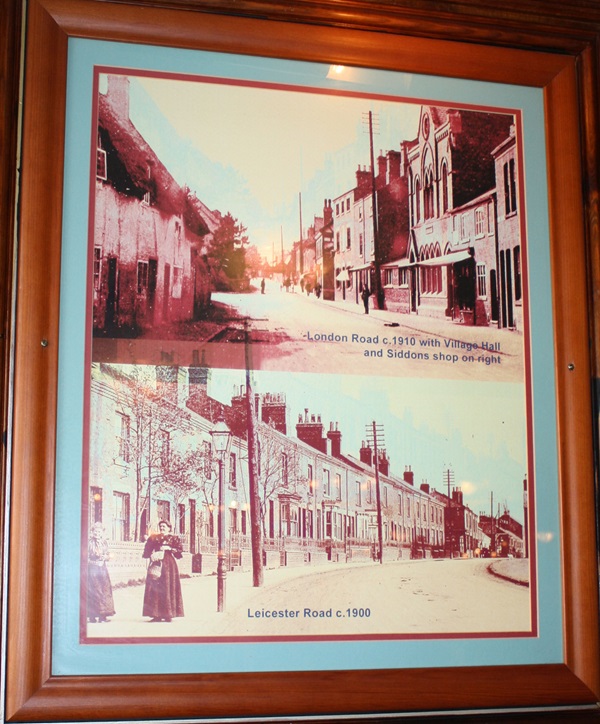
An illustration and text about The Great Seal.
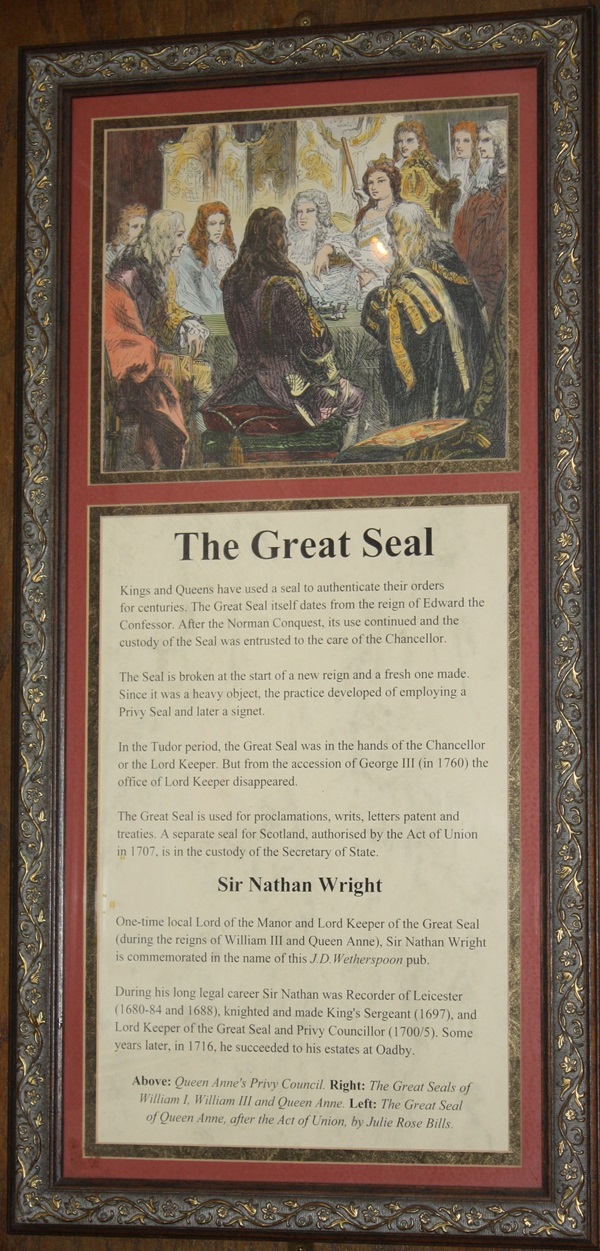
The text reads: Kings and Queens have used a seal to authenticate their orders for centuries. The Great Seal itself dates from the reign of Edward the Confessor. After the Norman Conquest, its use continued and the custody of the seal was entrusted to the care of the Chancellor.
The Seal is broken at the start of a new reign and a fresh one made. Since it was a heavy object, the practice developed of employing a Privy Seal and later a signet.
In the Tudor period, the Great Seal was in the hands of the Chancellor or the Lord Keeper. But from the accession of George III (in 1760) the office of Lord Keeper disappeared.
The Great Seal is used for proclamations, Writs, letters patent and treaties. A separate seal for Scotland, authorised by the Act of Union in 1707, is in the custody of the Secretary of State.
One-time local Lord of the Manor and Lord keeper of the Great Seal (during the reigns of William III and Queen Anne), Sir Nathan Wright is commemorated in the name of this J.D. Wetherspoon pub.
During his long legal career Sir Nathan was recorder of Leicester (1680-84 and 1688), knighted and made King’s Sergeant (1697), and Lord Keeper of the Great Seal and Privy Councillor (1700/5). Some years later, in 1716, he succeeded to his estates at Oadby.
Above: Queen Anne’s Privy Council
Right: The Great Seals of William I, William III and Queen Anne
Left: The Great Seal of Queen Anne, after the Act of Union, by Julie Rose Bills.
Photographs of London Road, Oadby.

Illustrations and text about landowners of Oadby.

External photograph of the building – main entrance.

If you have information on the history of this pub, then we’d like you to share it with us. Please e-mail all information to: pubhistories@jdwetherspoon.co.uk